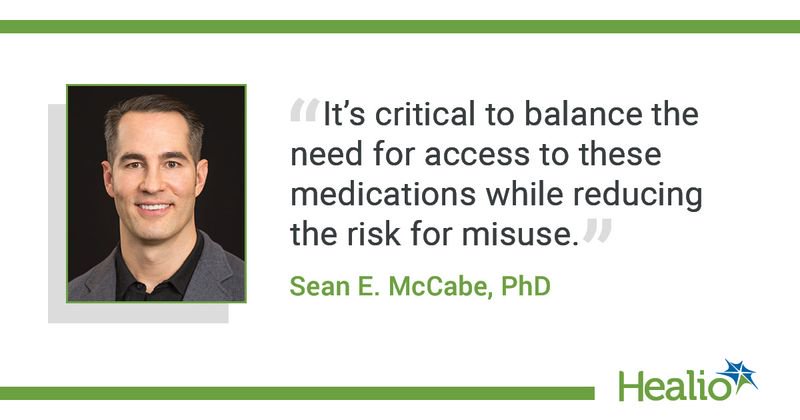In some US schools, more than 25% of students misuse stimulants
Key takeaways:
- Schools with students reporting stimulant therapy tended to have higher percentages of prescription stimulant misuse.
- Nonmedical use of prescription stimulants varied widely between schools.
The rate of nonmedical use of prescription stimulants exceeds 25% in some U.S. secondary schools, a study found.
Researchers also found an association between a school’s proportion of prescription stimulant use for ADHD and rates of misuse by students, according to findings published in JAMA Network Open.

According to the CDC, prescriptions for stimulants to treat issues like ADHD have increased since the start of the COVID-19 pandemic, especially among adolescent girls.
Findings from an earlier study suggested that teens with a history of taking both stimulant or nonstimulant medications for ADHD are at high risk for prescription stimulant misuse, as well as cocaine and methamphetamine use.
“To date, we have a much better understanding of prescription stimulant misuse among young adults, especially college students, but we have not put enough attention on younger adolescents in secondary schools,” Sean E. McCabe, PhD, director of the Center for the Study of Drugs, Alcohol, Smoking and Health at the University of Michigan School of Nursing, told Healio.
“As stimulant therapy for ADHD has increased over the years, our team felt it was a critical time to conduct this study,” McCabe said. “Prescription stimulant therapy for ADHD helps millions of people, including my own family, students, friends and colleagues.”
McCabe said such a study was “long overdue.”
“We need to understand the prevalence of stimulant therapy for ADHD and prescription stimulant misuse in U.S. middle and high schools,” McCabe said.
McCabe and colleagues used data from Monitoring the Future, a study conducted yearly by the University of Michigan and funded by the National Institute on Drug Abuse, which surveys middle and high schools across the U.S. on their substance use.
From a total of 231,141 student participants surveyed at 3,284 secondary schools, the researchers found that the school-level prevalence of nonmedical use of stimulants ranged from 0% to more than 25% of students. Overall, schools where 12% or more students reported use of prescription stimulant therapy for ADHD tended to have the highest percentages of their student body reporting prescription stimulant misuse — at least 8% of the total student body.
“The implication here is not that we need to lessen prescribing of stimulants for students who need them but that we need better ways to store, monitor and screen for stimulant access and use among youth to prevent misuse,” McCabe said. “Prescribers can educate teens on prescription stimulants as the medications they are intended to be and limit their availability as drugs of misuse.”
McCabe said future research should assess “what risk reduction strategies are most effective at the school level to allow safe access to these medications for students who need them while reducing the risk for misuse.”
“It's critical to balance the need for access to these medications while reducing the risk for misuse,” McCabe said.
References:
Danielson ML, et al. MMWR Morb Mortal Wkly Rep. 2023;doi:10.15585/mmwr.mm7213a1.
McCabe S, et al. JAMA Netw Open. 2023;doi:10.1001/jamanetworkopen.2023.8707.
Schepis TS, et al. Lancet. 2023;doi: 10.1016/j.eclinm.2023.101902.
